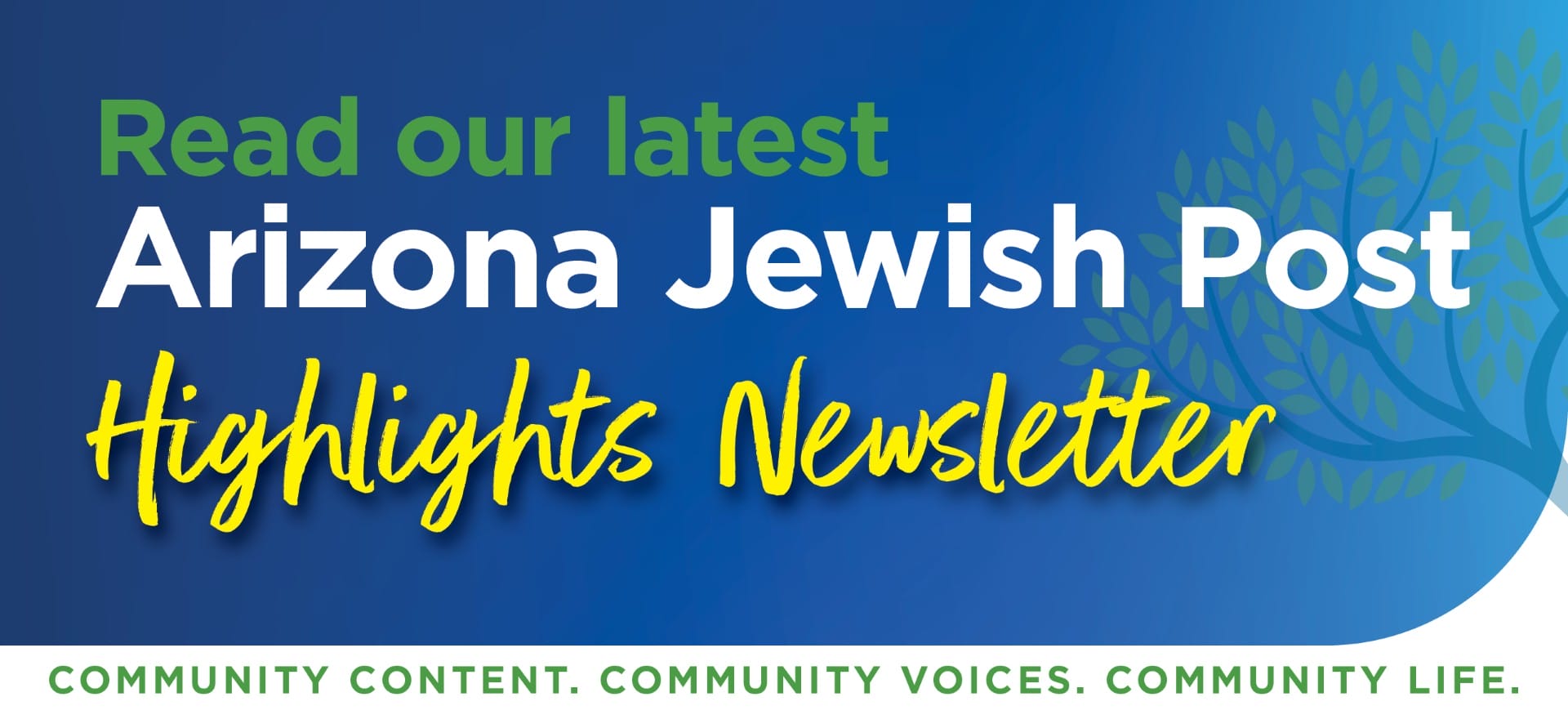 This past Sunday, Tucson Jewish Museum & Holocaust Center (TJMHC) unveiled our new mural to the public. The mural was painted by high school students participating in the Museum of Contemporary Art Tucson’s Minor Mutiny Teen Council, which provides teens with the opportunity to participate in public art projects around Tucson. As a partnering organization for the fall 2023 semester, TJMHC engaged Minor Mutiny participants by encouraging them to create something aligned with the work and mission of TJMHC.
This past Sunday, Tucson Jewish Museum & Holocaust Center (TJMHC) unveiled our new mural to the public. The mural was painted by high school students participating in the Museum of Contemporary Art Tucson’s Minor Mutiny Teen Council, which provides teens with the opportunity to participate in public art projects around Tucson. As a partnering organization for the fall 2023 semester, TJMHC engaged Minor Mutiny participants by encouraging them to create something aligned with the work and mission of TJMHC.
Participants began by attending a tour of the museum, creating an opportunity for education, cross-organizational collaboration, and meaning-making. The final iteration of the mural features TJMHC’s historic Temple Emanu-El synagogue building, references to the Jewish history and heritage of the museum site, and various parts of Southern Arizona’s wildlife. This helps to highlight the regionalism embedded in TJMHC’s work.
This collaboration is an integral part of TJMJHC’s ethos. Working as a cultural institution, historical/anthropological museum, and Jewish organization all at the same time, our work allows us to form meaningful relationships with a diversity of people and organizations around us.
Prior to the unveiling of Minor Mutiny’s work, for example, we hosted a performance with the Safos Dance Theatre tackling the legacy of the conversos & crypto-Jews in the American Southwest. Some of the supplies used for the event were generously loaned by the Invisible Theatre in town. Before that, we had hosted a talk by the archivists working on the Bloom Family Southwest Jewish Archives, an invaluable historical record.
As a part of Tucson’s vibrant history, particularly with regard to Barrio Viejo, the once-diverse neighborhood which houses TJMHC, we are careful to highlight the array of communities which make up Tucson. Barrio Viejo was once home to much of Tucson’s Latinx, Black, Asian-American, SWANA, and Jewish communities until urban renewal and gentrification, fueled by years of xenophobic animus, dispersed these communities and homogenized the neighborhood. Nodding to this history and its legacy today, we take collaboration seriously in and out of our exhibits and programming.
From our Antisemitism and Exclusion exhibit, to our work on Mapping Racist Covenants, to our range of banned book club meetings, to the personal-professional relationships we’re forging with other local museums and cultural institutions, the work continues.




